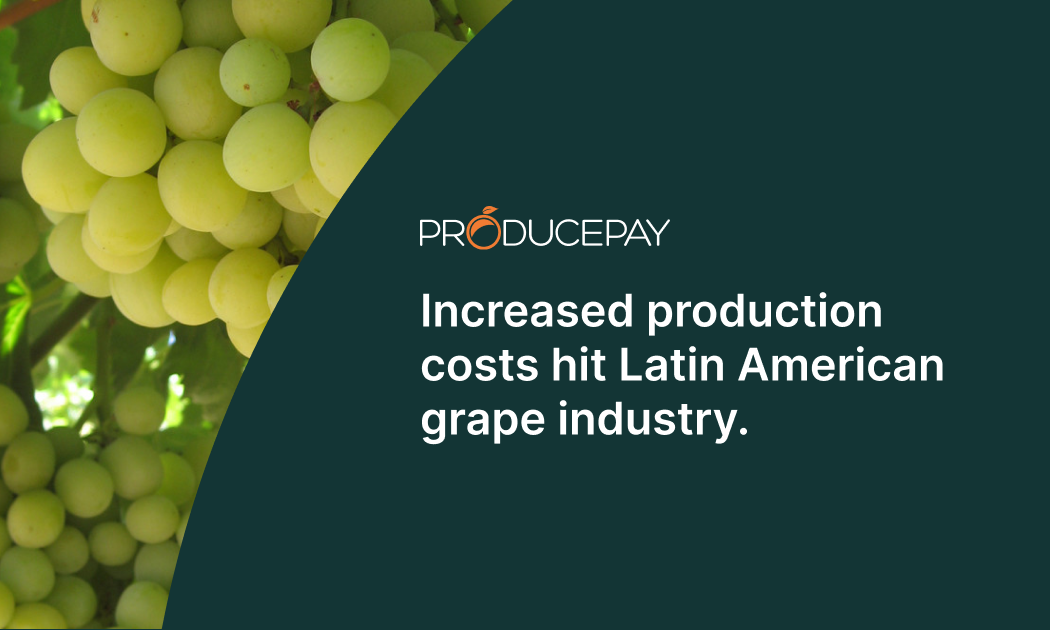
Increased production costs hit Latin American grape industry.
The Latin American table grape industry faces many challenges in the upcoming season that will require growers to adapt and evolve if they want to enjoy continued success.
The competition for global market share between Peru, Chile and Mexico will affect prices and push growers to create improved marketing strategies.
Peru stands out for its ability to offer early-season grapes and its extended production season. Chile faces external competitive pressures and has experienced a decrease in grape production and exports. Meanwhile, Mexico is taking advantage of its ability to harvest early grapes and its proximity to the US market.
While every country must deal with unique problems, managing rising production costs is a challenge for the entire industry.
Why are grape production costs increasing?
The cost of producing grapes is increasing due to a combination of factors, including:
Increased input costs
The higher costs of agricultural inputs, such as fertilizers and pesticides, are driven primarily by higher fuel prices and transportation costs.
Moreover, stricter regulations on the use of agricultural chemicals have prompted the introduction of safer and more environmentally friendly products, which tend to be more expensive.
Labor shortages
Agricultural labor costs have increased due to a shortage of farm workers, increases in the minimum wage, and expenses associated with benefits and labor regulations.
In the case of Mexico, ProducePay’s Field Operations team observed a labor shortage in the country’s northern region, where grape production takes place, due to competition with the Bajío region in the center of the country, a critical agricultural area for vegetables and grains.
Need for technology and equipment
The labor shortage is driving the increased development and use of advanced technology and equipment for grape production.
Growers now have access to specialized machinery, advanced irrigation systems, pest and disease control equipment, and specialized production technologies to meet the demand for high-quality grapes.
And while these advances improve production efficiency and quality, they also require significant upfront investment and higher maintenance costs.
Increased regulations and compliance
The past few years have seen a significant increase in grape grower regulations that cover everything from food quality and safety to environmental protection and labor rights.
While these regulations represent a greater economic outlay and additional challenges for growers, they also offer opportunities to increase product quality, strengthen agricultural sustainability and promote social responsibility.
Impact of Climate Change
Climate significantly impacts grape production costs, as adverse weather conditions can generate substantial losses by damaging plants and reducing crop yields.
Climate variability makes it challenging to plan and manage agricultural operations. In the face of major climatic changes, growers must utilize adaptive management strategies, such as selecting resistant varieties, implementing efficient irrigation techniques, and applying appropriate agronomic practices.
How can growers manage increased costs?
Increases in grape production costs directly impact growers’ cash flow, which is vital in an industry as uncertain as agriculture, especially during the harvest season.
That’s why access to financing is critical, since having a constant cash flow not only provides the stability that growers in Latin America need to overcome the effects of increased costs and allow them to reduce uncertainty and improve their production efficiency.
Buyers who ensure that their suppliers have sufficient liquidity can guarantee a more constant supply of fresh produce and better-quality grapes.
Sources: Portal Frutícola, Fresh Plaza, Portal Frutícola
